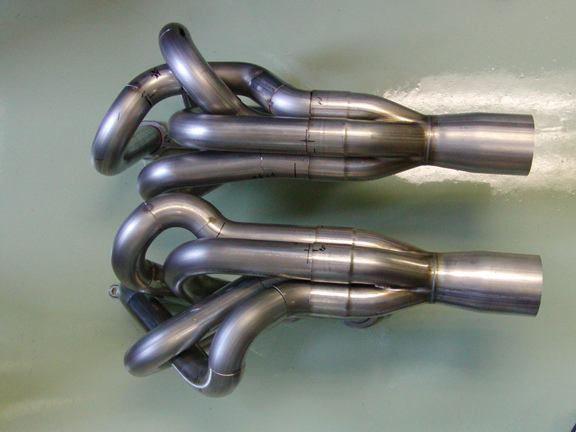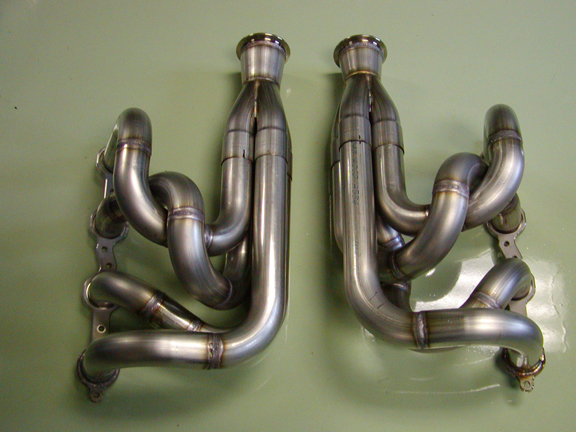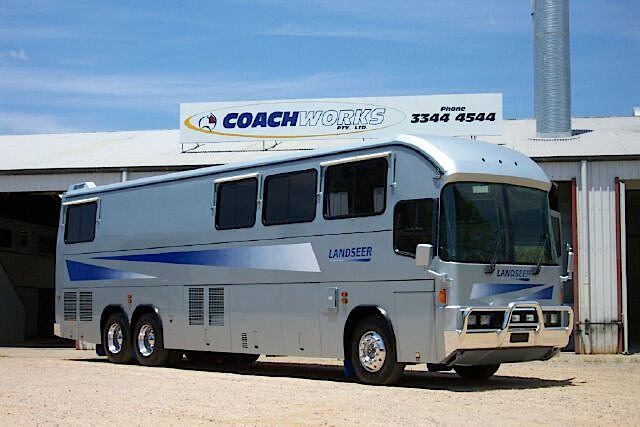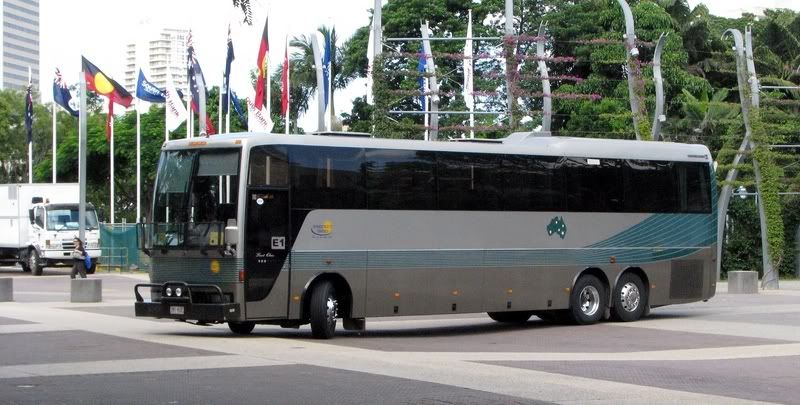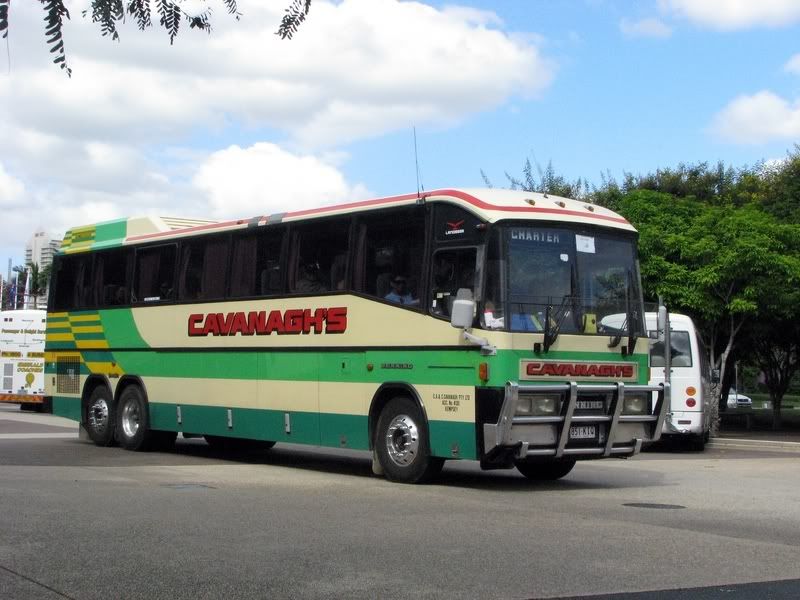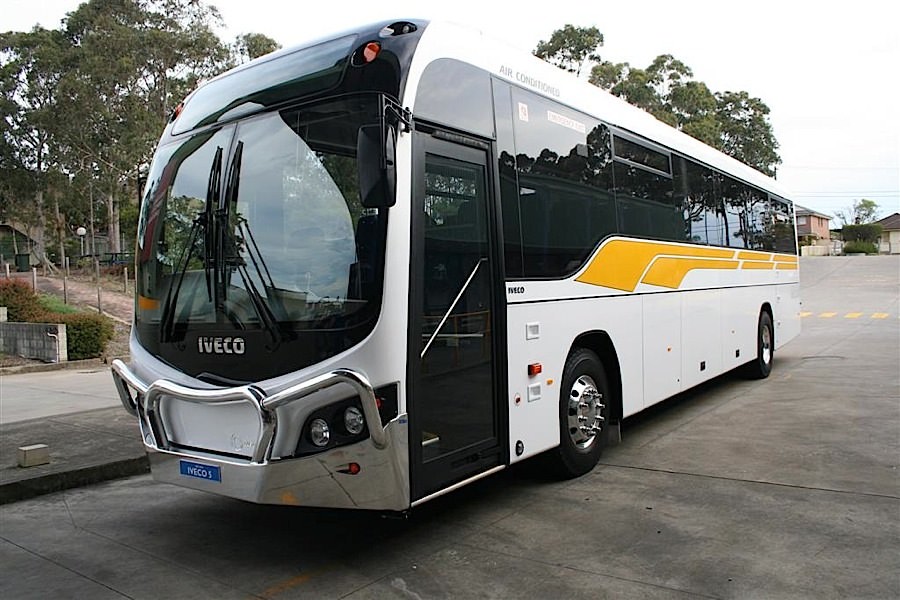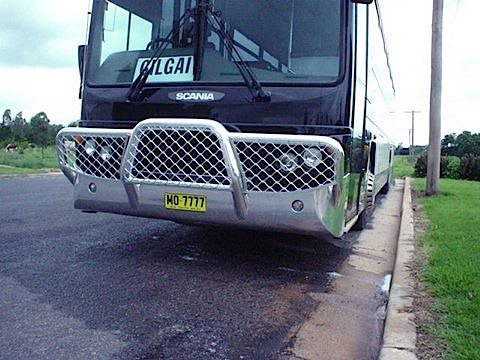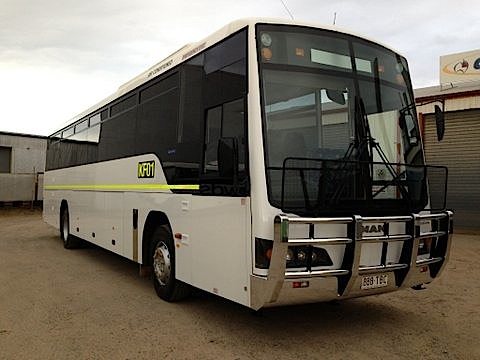...and on we rage!! :wings:
Suspension, again:
4x4 vs. 6x6, steering axles, lift axles, etc.....
Okay - you want a 6x6 to avoid shallow break-over angles. Fine - why not!
To get that idea maxed out, you need to get the middle axle ********** in the center between the front and rear axle.
This also means you need at least 2 steering axles or you will start to rip things apart in short order.
Even if you have a tight rear tandem axle it will put a major strain on the front wheels when steeering in tight quarters, unless you have a steerable (or passively tracking) tag axle, these are mostly NOT powered ones - though this configuration is not really on purpose for your application.
So, the question remains WHICH 2 axles should steer or should all of them steer??
For the purpose of your rig, I suggest to have the rear axle fix and the center and front steer.
That will keep the rig stable at high speeds and the turning sensation similar to what you are used from cars.
I doubt you will ever encounter a situation where you need to have the "pivot around the center axle"-feature....or the need to "crab walk"
Remember, we decided that Terraliner would mostly stay on roads, bad roads, but ON roads.....
Though I brought it up, I would have to really think hard about Air-suspension vs. KINETIC suspension.
[Though no doubt - one of the two would be on my rig! For your info, Air-suspension parts can be bought off the shelf in an amazing amount of variations, KINETIC like systems need ot be custom designed.....there is nothing of the shelf - basic components could be adapted though - e.g. hydraulic cylinders]
[Also - as you asked somewhere recently - to my knowledge, a UNIMOG was the biggest vehicle KINETIC tried out with their system - I don't know if they tried anything bigger, but this kind of system scales up rather nicely! Choosing the UNIMOG was also a great oportunity to showcase how the KINETIC system takes out a lot of the articualtion/flex stress usually experienced by by heavy articulation work off road......
as posted before - look at the LACK of the typical Unimog chassis-flex at 2:10!
There are quite few tricks you can do with the KINETIC, if you exploit the possibilities to the max., but there is a lot you can do with a Air-suspension too, but Air is a lot simpler to build and maintain.
Either way you go, have a
"manual back-up" available!!: If you get fancy with the KINETIC system you will have loads of electric valves and loads of hydraulic and pneumatic hoses and all over the place - all controlled - no doubt - by a computer of some form. IF the computer should go on the fritz someday, you need a way to get to still drive your truck. No problem if you have a manual way to switch and lock valves into place.
"Fancy" is then gone from the suspension, but you still will have a superior suspension to regular leaf or coil springs....
With a normal Air-Suspension set up, you can still build in a lot of off-road trickery, but the whole system will be easier to run....
With either one it is easy to rig it to have any wheel or axle raise individually and I certainly would do that!
a) Certainly will help with tire/wheel changes
b) Sometimes, many wheels are not the best solution for traction! If you get into such a situation, it is easy to lift a wheel/axle and provide more weight on the remaining axles/wheels!!
c) Raising wheels is mainly a way to save a few bucks on tire wear in the trucking industry and may also improve the ride when empty.
On the Terraliner with evenly spaced axles it might help with tire wear (....IF your MVGW comes in under the 2-axle limit), but it will certainly look funky with the middle axle in the air! (Though keep the ability! If you have some damage at the axle/wheel/tire you can get it off the ground and the rig rolling until you get to a place where you can fix things!)
External protection:
We are talking about all the tubing around the truck!!
1st you need to decide what you need/want:
a) A protective cage
b) A Brushguard
c) Roll-guards
d) Bullbar
e) Sliders
I call Roll-Guards what you find on a TRIAL Truck - you KNOW that you will use this a LOT and might actually use it as part of your obstacle negotiation plan. Most TRIAL rigs get rid of any weight not needed. ....then they put it right back in with a super-strong (...and heavy) Roll-Guard, which essentially becomes part of the chassis. Roll it, slide it, push with it, pull on it - whatever......
Mostly NOT practical for an Overlander.....
Now it becomes interesting:
Do you need a Protective/Roll-Cage? One of these will most definitely deform when called upon it's task - partially it will absorb impact forces while protecting the individuals inside the vehicle from getting crushed by avoiding that the truck structure itself gets deformed too much.
Anyway - after the matter it won't be pretty - NOTHING will be pretty ...anymore, BUT you and your gang is alive - that's all that counts and that's all the guard is for!! So - as long as you don't need it, it will look the part and do the show. When you call on its reason to be there, you most likely will NOT be driving anymore anytime soon.....
IF the partyline holds, I believe you will incorporate the Roll-cage into the truck structure - so, no external roll-cage needed for the Terraliner!
Brushguard? Could look much the same as a Roll-Cage, but would be "lite duty" in construction in comparison.
Main task - keep brush off parts of the truck where it could do damage: Lights, Mirrors, Windows
[You also should incorporate a "Powerline"-brush guard - you have no idea how many local powerlines are hanging ridiculously low!!]
A brush guard might not be able though to prevent the damage suffered by a recent poster - backing up the truck into a tree....
Sliders? DEFINITELY! Basically a strong, mostly steel construction along the sides just at/below the side panels.
Rigidly connected to the chassis and intended to be used as a protection for the truck body, but allowing to slide along or over rocks!
So they have to be EXTRA-HD, they need to be able to support the weight of the truck and can be used to recover or jack up the rig as well.
Don't make the mistake to get them too low below the side body panels or they will become a hindrance.
On a rig the size of the Terraliner I would aim to have them about 25-30 mm below the lowest panel - this should allow for enough flex without damaging the body....
Slider need to be "slippery" on all sides so they don't become spikes and hook up instead of deflecting and sliding off....
I suggesto to have these on the Terraliner - they are also a great defense against side-impacts by other vehicles!
However you should NOT incorporate these into the truck structure - make them easily replaceable, these are a "wear item"...
Bullbar/ DEFINITELY!! In other parts also called a Roobar (....many a Kanga-roo ended on a roobar! better the roo than my radiator or worse!)
Even though you can place your power plant ANYWHERE you like - by far the most side for traffic "incidents" is the FRONT side!
If you don't want a big cattle catcher on the front, at least incorporate some solid mounting points, so that a client can do his own thing there!
IF the Terraliner has no facility to mount a Bullbar AND winch up front - I don't want one!
NOT exactly what I would want my bus to look like, but you get the idea!
[I would build mine with a little more ground clearance.....]
"Kneeling" - for easier access for passengers....
This one should be up your alley - all round, incl. the bullbar!!
....as a side observation: MOST of these buses also have a stone guard for the windshield!!
LOADS of window on these!!
Another one to the "Powerline"-Brushguards:
It is curious to look through the Explorer-rigs show in this thread - some are perfect to slip under a powerline and lift it up, others would just catch it and rip it apart!
At least in the countries I saw this problem a lot, most local powerlines will have a max of 400V. Most lines will actually be a cable (with plenty of isolation), hardly ever a bare steel or alu wire....
All it takes is a guard that lets the powerline slide up in front of the truck, slide along the top and fall off clean at the back - should be too hard to incorporate into a new design.
Still I would alway make myself a telescoping and insolated "powerline lifter" - worse case I can prop up any line enough to pass the truck and then retrieve the prop-ups..... - 4.5m should do the trick......
A 2nd one to backing up into a tree:
Probably impossible to protect EVERY part of the truck from damage like that.
The only way to avoid is, to make sure you are clear BEFORE you back up!
On my rig, I just would mount cameras all over the rig and plenty of lights - especially at the back!!
[AND these lights WILL have a manual switch!! Maybe illegal, but NOTHING backs off a tailgater faster than a short, bright flash from your back-up light canon!! ...which reminds me, that I need to fix that "dark situation" on my Amarok - great truck, but probably the lousiest back-up light on the planet...]
3rd one .....for now:
Mirrors! DON'T skimp on mirrors!! I want loads of them! Talk to any commercial driver and they will confirm that you never have enough field of view!
Generally this would be 2 on the driver side and 3/4 on the passenger side - This will cover everything but the rear of the truck!
[Even the front should be on one of the mirrors, which means the mirrors will actually be in front of the windshield - unless you have a camera showing the front of the truck]
For the rear -as stated above, NOTHING beats a good set of cameras on a good size screen!
....Later
























